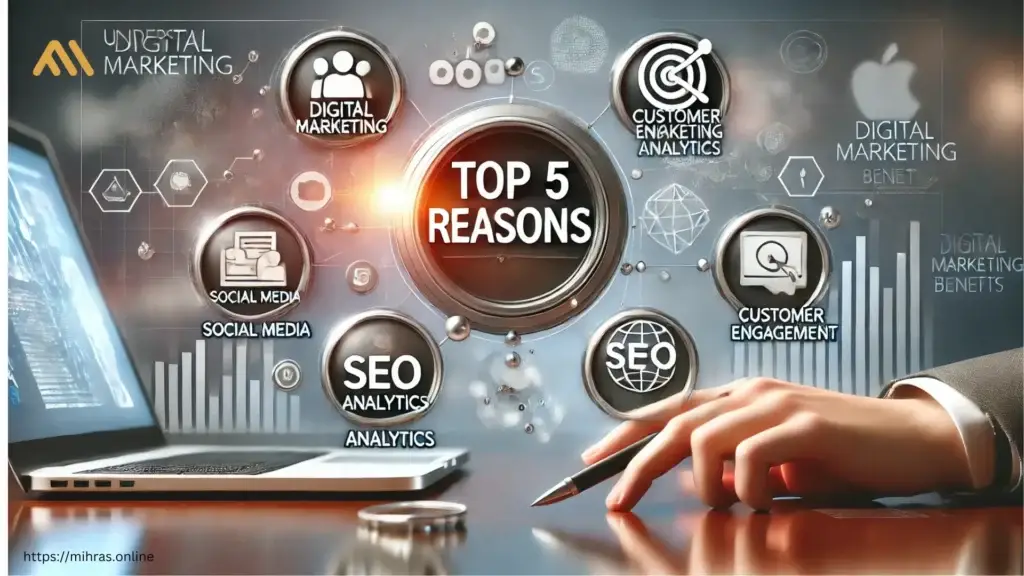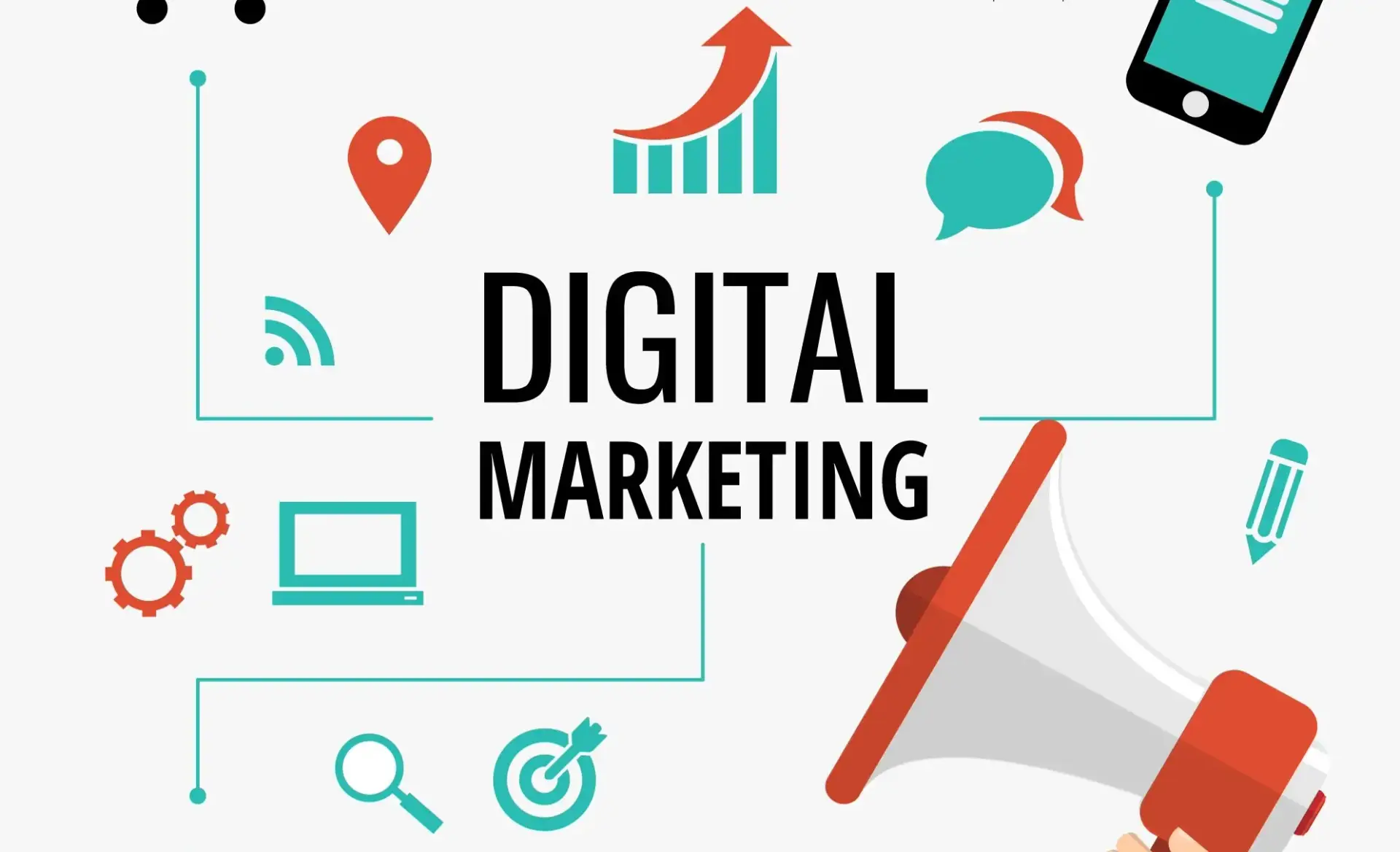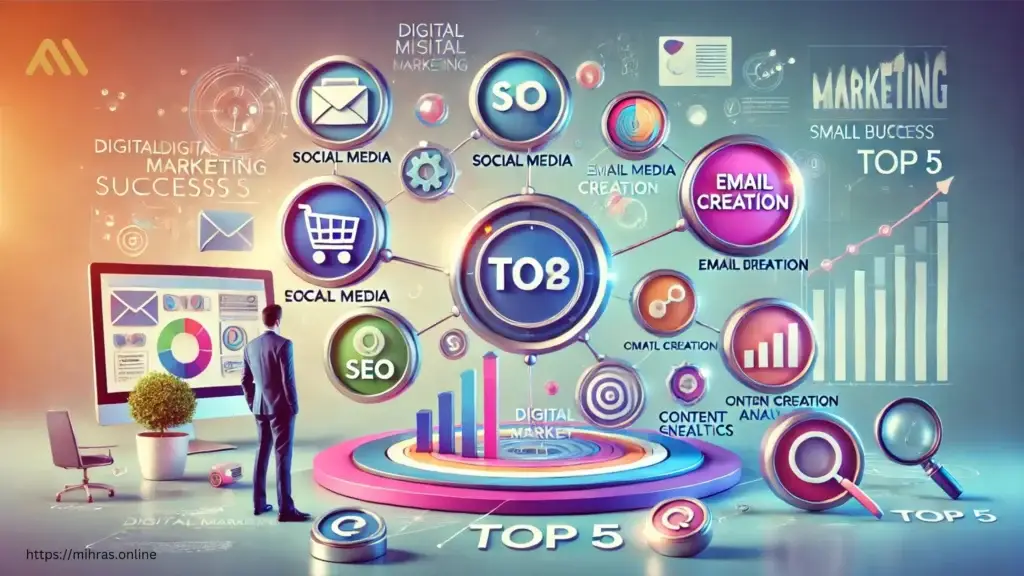Introduction to Digital Marketing
1.1 What is Digital Marketing?
Digital marketing is a way to promote products or services using online platforms and technologies. This includes a wide range of activities, from social media campaigns to email newsletters, targeted at reaching potential customers where they are spending a lot of their time: online. Think about scrolling down your social media feed and seeing an ad for your favorite brand—that’s digital marketing!
1.2 Role of Marketing in the Digital age
As we’ve transitioned into a digital-first world, traditional marketing methods like print ads and direct mail have taken a backseat. Now, customers interact with brands primarily online, making digital marketing a necessity for any business. It’s not just about getting noticed; it’s about engaging with customers effectively. Brands now have the ability to connect with millions globally at the click of a button.
1.3 Role of Digital Marketing in Modern Business Environment
Today, the importance of digital marketing cannot be overemphasized. With consumers increasingly relying on the internet for shopping, businesses that employ digital marketing strategies experience phenomenal growth. In fact, a staggering 67% of consumers reported they researched a product online before purchasing it. Digital marketing is no longer a nicety; it is a necessity in business today.
2. Key Components of Digital Marketing
2.1 Search Engine Optimization (SEO)
SEO involves optimizing online content to achieve higher rankings in search engine results. Think about the last time you searched for something on Google—how often did you go to the second page of results? Likely not very often. A strong SEO strategy enables businesses to attract organic, non-paid traffic to their websites, making it easier for potential customers to discover them.
2.2 Social Media Marketing
Social media is one of the most effective channels for connecting and interacting with audiences. Platforms like Facebook, Instagram, and Twitter each offer distinct ways to share content, engage followers, and promote products. Whether through sponsored ads or organic posts, social media marketing helps create a vibrant community around your brand.
2.3 Content Marketing
The aim of content marketing is to attract and retain a specific audience by consistently producing valuable and relevant material. Blogs, videos, podcasts, and infographics can help establish a brand as a thought leader within its industry while also educating potential customers. Providing your audience with meaningful content builds trust and fosters long-term loyalty.
3. Strategies for Successful Digital Marketing
3.1 Researching the Audience and Targeting
Knowing the audience is the first step to reaching them. Demographics, interests, and online behaviors are some ways in which businesses can study and fit their marketing strategy to suit the needs of a customer. Tools such as surveys and analytics provide invaluable insights for effective targeting.
3.2 Development of Engaging Content
A digital marketing strategy should be anchored in engaging content that speaks directly to the interests of your audience. Whether it’s blog posts answering common questions, social media posts encouraging interaction, or videos showcasing products, engaging content has a greater likelihood of being shared, extending its reach.
3.3 Results Analysis and Measurement
Digital marketing allows for precise tracking of results. Using analytics tools, businesses can measure the effectiveness of their campaigns and make necessary adjustments. For example, if a specific social media post performs well, creating similar content might be a good idea. This data-driven approach helps in continuously optimizing marketing efforts.
4. Tools and Platforms for Digital Marketing


4.1 Email Marketing Tools
Email marketing continues one of the most effective ways to reach customers directly. Platforms like Mailchimp or Constant Contact help businesses design, send, and track email campaigns easily. Customised emails have the power to nurture leads and turn them into paying clients.
4.2 Social Media Management Platforms
To navigate the dynamic landscape of social media, tools like Hootsuite or Buffer can assist in scheduling posts, tracking engagement, and analyzing performance across different platforms. These tools simplify the process of maintaining an active online presence.
4.3 Analytics and Tracking Software
Understanding the effectiveness of your digital marketing efforts is essential. Google Analytics, for instance, provides insights into how visitors interact with your website, allowing businesses to make data-driven decisions. Time and money can be saved by understanding what works and what doesn’t.
5. Future Trends in Digital Marketing


5.1 The Rise of Artificial Intelligence
Artificial Intelligence (AI) is becoming a game changer in digital marketing. From chatbots that provide customer support to algorithms that tailor advertising, AI can enhance customer experiences significantly. This tech not only streamlines operations but also offers personalized interactions that consumers appreciate.
5.2 Personalization and Customer Experience
Today’s consumers expect personalized experiences. This means that successful digital marketing strategies will focus on customizing content and offers to meet individual preferences. Personalized email recommendations and product suggestions based on past behavior are just a couple of examples of this trend.
5.3 The Impact of Voice Search and Smart Devices
With the increasing use of voice-activated devices like smart speakers, businesses need to adapt their SEO strategies to accommodate voice search. This shift means optimizing for conversational queries, making it easier for users to find what they’re looking for quickly.
Conclusion
Digital marketing is an essential aspect of modern business, bringing vast opportunities for brands to connect with their audience. By embracing its key components, effective strategies, and the latest trends, businesses can thrive in an increasingly digital world.
Frequently Asked Questions (FAQs)
What is the difference between traditional and digital marketing?Traditional marketing often relies on physical media, like billboards and print ads. In contrast, digital marketing uses online channels and technologies to engage with audiences, allowing for more precise targeting and interaction.
How can small businesses benefit from digital marketing?Small businesses can reach a broader audience without a hefty budget by utilizing digital marketing strategies. They can effectively engage with customers, build brand awareness, and track their progress, level-playing the field with larger competitors.
What are the essential skills needed for a career in digital marketing?Key skills include analytical abilities to measure the effectiveness of campaigns, creativity for content creation, and a solid understanding of social media platforms and SEO. Being adaptable to new technologies and trends is also crucial in this fast-moving field.





